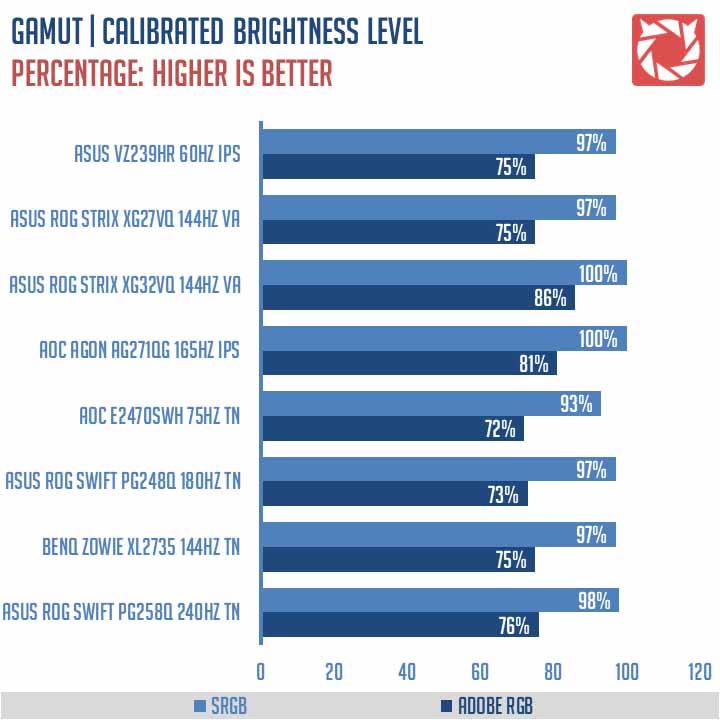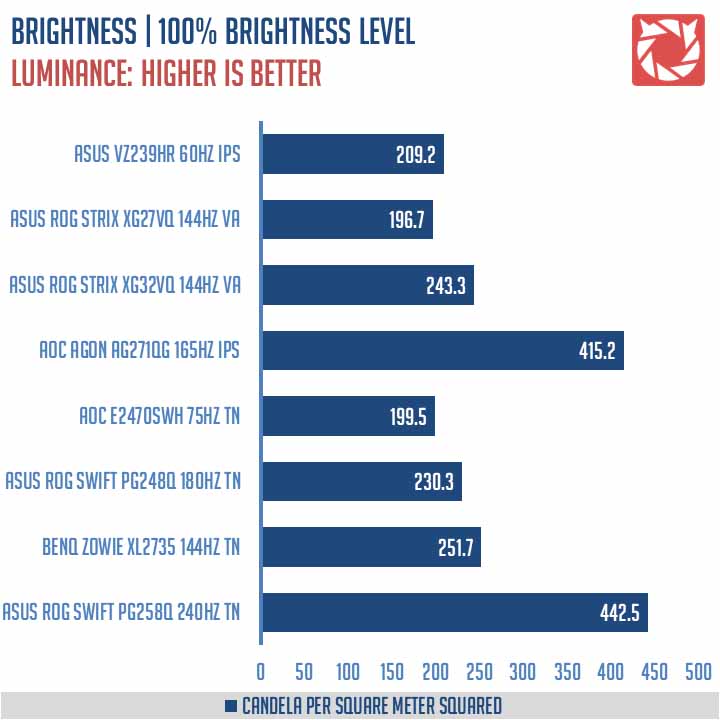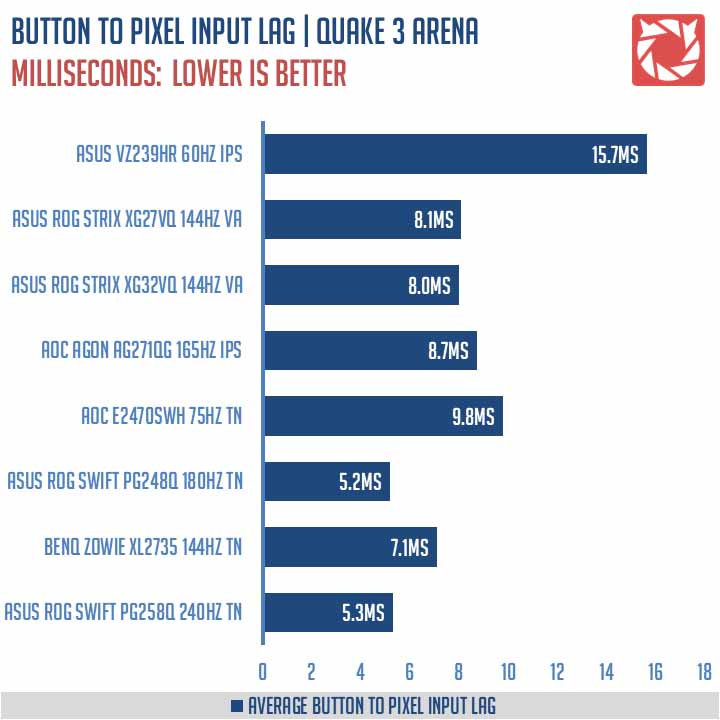Eons ago, we tested the ASUS VX239H. A popular budget IPS monitor back in the days. The VX239H is not exactly the best, but being a borderless IPS display with a price to match is something else for its era. Now enter 2018 with the ASUS VZ239H. The latest incarnation of the popular budget display with a more luxurious frameless design on top of an IPS panel.
The ASUS VZ239H remains true to the VX239H bloodline as opposed to the VC239H’s utilitarian approach. We’ll learn more about its unique features, differences and similarities with older models on this in-depth review. This could also be one of the best monitors for the PS4, based on its core specifications alone.
Table of Contents:
Technical Specifications
There are Four VZ239H models to choose from, with the VZ239HR acting as the top-end model out of the bunch. Models vary in color, display ports, bundle and the inclusion of internal speakers.
| Display | |
|---|---|
| LCD Size (inch) | 23 |
| Aspect Ratio | 16:9 |
| Resolution | 1920 x 1080 |
| Refresh Rate | 60Hz |
| Display Area(mm) | 509.2 x 286.4 mm |
| Pixel Pitch (mm) | 0.265 |
| Brightness (cd/㎡) | 250 |
| Contrast | 1000:1 |
| DCR | 80000000:1 |
| Panel Type | IPS |
| Response Time | 5ms |
| Connectivity | |
| Input/Output Connector | HDMI, D-Sub |
| USB/Audio | 3.5mm Mini-Jack |
| Ergonomics | |
| VESA Wall Mount | NA |
| Pivot | NA |
| Swivel (left/right) | NA |
| Tilt (°) | -5°/+22° |
| Hight Adjustment (mm) | NA |
| Special Features | |
| Anti-Screen Tearing | NA |
| Anti-Motion Blur | NA |
| Profiles | YES |
| Contrast Control | YES |
| Blue Light Filter | YES |
| Black Equalizer | YES |
| Overdrive | NA |
| Speaker | 1.5W x 2 Stereo RMS |
All ASUS VZ239H models features a Full HD IPS panel with an aspect ratio of 16:9. The contrast ratio is rated at 1000:1, with a typical brightness rated at 250 cd/㎡. Response time on the other hand is rated at 5ms and refresh rate is at 60Hz.
Design, Build and Connectivity
The ASUS VZ239H is a 23″ IPS monitor with a 7mm thin metal frame which is dead gorgeous. It is actually thicker at 33mm to the bottom but regardless, it is still a beautiful display.

The ASUS VZ239H is also a more appealing choice compared to the VC239H. Though we miss the inclusion of the VESA mount at the back. As for the OSD, ASUS went with physical buttons which is akin to the VC239H. That’s good, considering that the VX239H is hindered by its chaotic touch approach.

Screen coating used is a blend between a gloss and a matte finish. This is to accentuate the color reproduction of the IPS panel while maintaining the functionality to diffuse ambient lighting. Bezel on the other hand is around 9mm thin on the sides and 21mm thick at the base. Great for multi-monitor setups.

Ergonomics is where the VZ239H kinda let us down. It tilts from -5° to 22° and that’s about it. There’s no height adjustment, nor a swivel action. Had it featured a VESA mount as an option, ergonomics could be a little better.

As for display options, we got a single HDMI 2.0 connector and a D-Sub. Nothing else – except for the 3.5mm audio jack for the output. Power is unfortunately still external but it had to be done to shave thickness.

What we liked however are the proper speaker holes for the dual 1.5W stereo speakers. The design is much larger and much better than the previous models. It helps to aid ventilation too.
OSD
The ASUS VZ239H features a not so simple OSD menu. Totally incomparable to the previous ASUS gaming monitors we’ve tested. The button layout is not helping either, with the menu button acting as a 3-in-1 input. It’s a shortcut, menu button and a navigation button in one. Glad that we have a number of presets though via the ASUS Splendid menu.

The Blue Light Filter menu is self explanatory, while Color is where the magic’s at if you plan to play with the monitor. Everything we need to calibrate the display are located here with the exception of the gamma settings.

Other ASUS features are located on the Image and System Setup menu. Again, this is not an easy OSD to play with but it is still better than the 75Hz AOC monitor we tested.

Calibration
Our test setup relies on the Blur Busters TestUFO Motion Tests and Data Color’s Spyder5ELITE Display Calibration System. Target for calibration is a 2.2 Gamma value, with a White Point at 6500K and a Brightness value set at 120 cd/㎡. Calibrated values are then analyzed with the Spyder5ELITE Display Analysis tool. Do note that Dynamic Contrast Ratio and other extra features built within the OSD are disabled during the tests.
The cameras used throughout the review for the motion artifact and high speed assessments are the Fujifilm XE-1 and the Nikon 1 J1.
The following OSD values are selected for the display calibration. If you wish to use the calibrated ICC profile taken from our Spyder5ELITE result, just send us a message. You may also read our guide on how to use ICC profiles.
| ON SCREEN DISPLAY SETTINGS | |
| Brightness | 57 |
| Contrast | 80 |
| Saturation | 50 |
| Temperature | User (R100, G100, B100) |
| Gamma | NA |
| Preset | Game Mode |
Gamut
The Gamut test evaluates the color spaces the display exactly covers. That includes industry standard spaces such as sRGB and AdobeRGB. Higher percentage values are better.

The VZ239H has a good enough color space coverage. We got a 97% sRGB coverage while AdobeRGB results are at 75%.
Tone Response
Tone response is where we check the display’s Gamma values and or presets if there are any. We then compare the results with industry standards of 1.8, 2.2 and 2.4. Closer to these values are better.

Since the VZ239H doesn’t feature any gamma settings, it stays put at one standard during the testing period. It sits at 2.2 which is fair enough.
Brightness and Contrast
The result of the tests shows us an overview on how the display actually performs in terms of Brightness and Contrast ratio on varying brightness levels. Higher is better.

Brightness at 100% using our calibrated profile is rated at 209.2 cd/㎡. Contrast ratio on the other hand is at 210:1. The brightness value from our calibrated result is good enough, white the contrast ratio could be better. It’s one of the things that you need to consider of you’re shopping for this display. The contrast is just not good enough to enjoy a movie under a dim room.

Screen Uniformity
This test shows us an overview of the screen’s uniformity at the calibrated brightness level. The closer this value to 0, the better the performance of the panel.

Screen uniformity is generally good with decent DeltaE differences.
Color Accuracy
This test shows how well different basic color hues are being reproduced by the display. These color tones correspond with the Datacolor SpyderCheckr. Lower Delta-E values are better.

The color accuracy of the display could be better, at least when handling bluish tones. An average of 3.05 is below decent based on other displays that we tested.
Power
The power consumption is checked with a power meter. Measurements are taken at maximum brightness level.

Power consumption is excellent for the 23 inch VZ239H. That’s a full 16.7W load at 100% brightness level on our calibrated setting.
Backlight Bleed
Backlight Bleed is the phenomenon where backlighting from a display leaks. This is prevalent with LED backlight enabled displays where the LEDs used to light the panel are situated at the edges of the display. Testing the Backlight of the display is conducted on a dim room, simulating the recognizable amount of bleed for such scenario.

Viewing Angles
Viewing angles are also tested to check out how the display panel performs on various positions. This should be helpful if you are looking for a panel that could be used on multi-monitor setups.

Backlight bleed at 120 cd/㎡ is slightly noticeable at the top of the VZ239H. Viewing angles on the other hand is excellent. Typical output from an IPS panel.
Input Lag
The Button to Pixel Input Lag is a combination of system latency from the point of input, processing and display output. That is the basic of it and to quantify the approximate Button to Pixel Input Lag, we utilized Quake 3 Arena as our main shooter. The game is set at the native resolution of the panel with the FPS locked at 250. We check how much delay in milliseconds it took the display to actually output the signal via a 1200 FPS high-speed camera with ~0.83ms of accuracy.

Our button to pixel input lag tests shows that the VZ239H has an average of 15.7ms of lag. The highest so far on all the monitors tested.
Frame Skipping
Frame Skipping is the phenomenon where dropped frames and missing refreshes occur due to ineffective refresh rate overclocking. If your display exhibits such issues, it should be perceptually similar to in-game frame skipping. We are are utilizing the Blur Busters Frame Skipping Checker to test if there is any.

Not a chance of any skipping frames at default refresh rate.
MPRT
Setting up a pursuit camera courtesy of Blur Busters allows us to a great extent, perceive the actual motion blur of the display. Using such method also allows us to check out for other motion artifacts including ghosting, inverse ghosting and other artifacts. This pursuit camera test is a peer-reviewed invention.

At 60Hz, we expected the VZ239H to output an MPRT equivalent to 16.7ms. It is the epitome of 60Hz panels which is definitely subpar compared with strobe enabled displays and higher refresh rate monitors. Artifacts are also prevalent and you can’t do anything about it since the VZ239H doesn’t feature any semblance of overdrive technology. Side note: The VZ239HR doesn’t feature ELMB. It’s an error on our chart.
Conclusion
The ASUS VZ239H is a practical display that goes beyond its calling – at least not on the gaming part. It is an IPS display featuring a stunning design, build quality and basic commodities. Gaming oriented features are nil, but it should be enough for MOBA games, RTS and even racing genres or where motion clarity is not the most important thing to consider. The dual 1.5W speakers outputs decently though, which is enough for us to use it on its own – nice for ASUS to consider.
Value wise, we are looking at a sub 175 USD (8930 Pesos) IPS monitor here and with a frameless design at that. It is truly frameless, but the panel itself is not. Technically, ASUS is not in the wrong here and we actually have yet to see a true borderless display. That’s especially true if we consider the market segment.
In closing, the ASUS VZ239H is a budget monitor that offers a design and build quality that usually fits the 300 USD market range. A stunning monitor with a head turning market value.
ASUS VZ239H Monitor
Summary
In closing, the ASUS VZ239H is a budget monitor that offers a design and build quality that usually fits the 300 USD market range. A stunning monitor with a head turning market value.





4.5
5
Bought this monitor and the overall display is actually good. What turned me off is the moving picture response time. Every time I play a video, the response time is unbearable as it lags. Good thing the store has 7 day replacement and I’ll be replacing this with a better display.
The MPRT and input lag are holding the display off in spite of its favorable qualities. Glad that you’ve found yourself a replacement.
What did you get for a replacement? I was planning to use this for PS4 Pro.